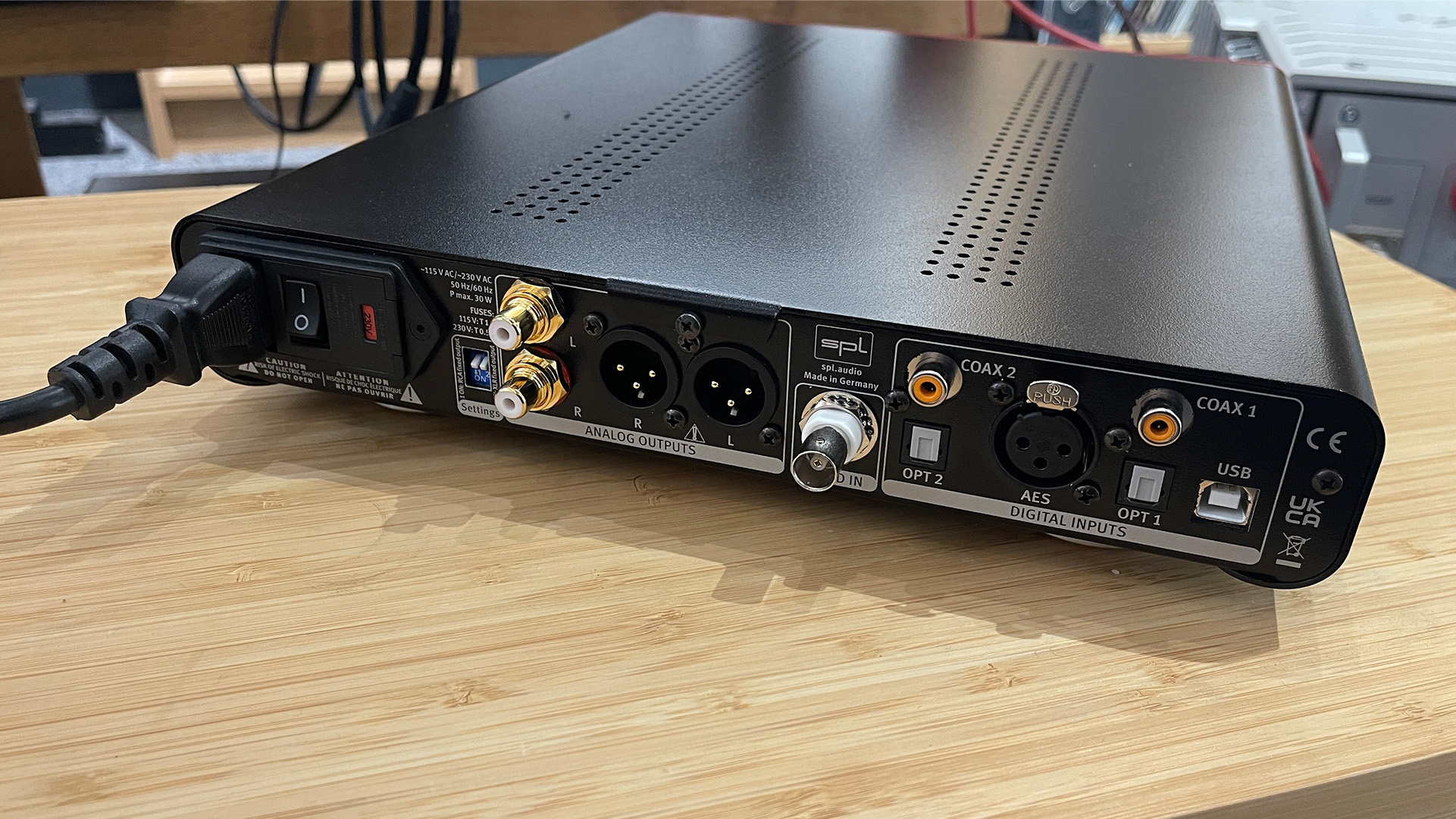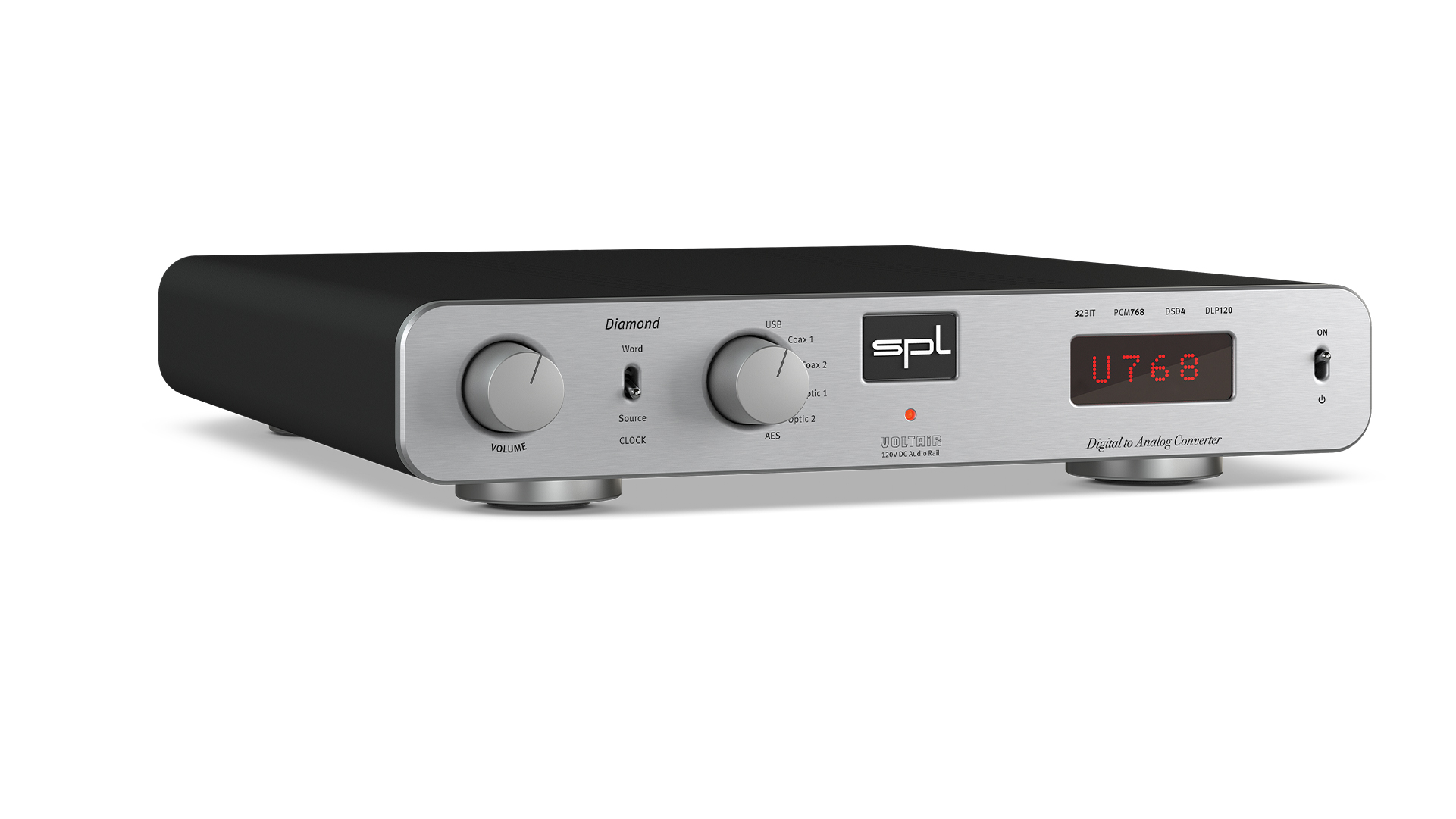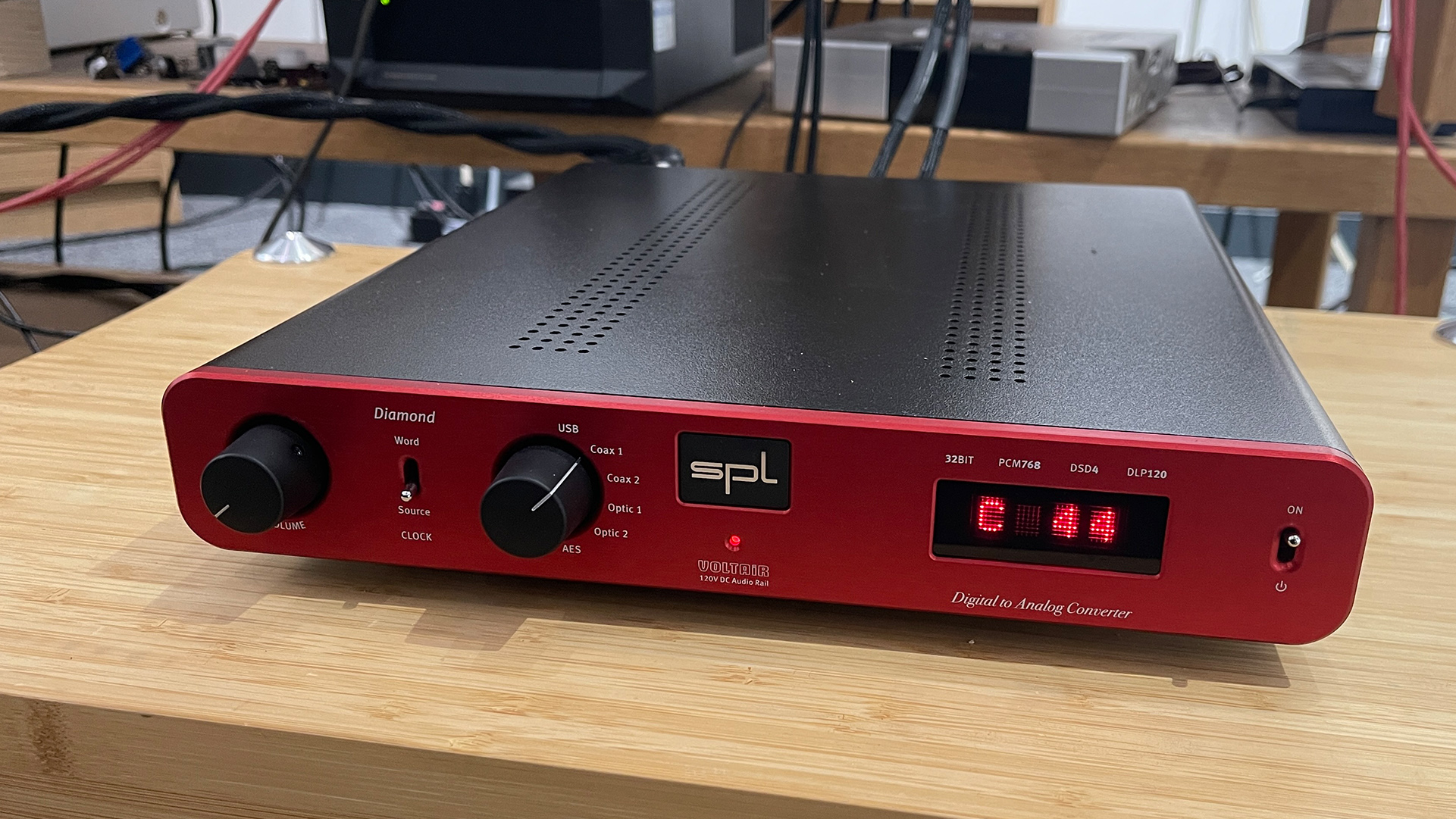What Hi-Fi? Verdict
SPL’s Diamond is a versatile, no-nonsense performer that will work well in a wide range of systems
Pros
- +
Clean, balanced and insightful presentation
- +
Versatile
- +
Reassuringly solid build
Cons
- -
Tough competition, that does even better in terms of dynamic expression and transparency
Why you can trust What Hi-Fi?
SPL Audio is a small German brand that has been quietly making professional and home audio equipment for around four decades. It specialises in electronics, making an extensive range of studio processors, DACs and amplifiers. We first came across the brand when we tested its rather excellent Phonitor xe analogue headphone amplifier just over a year ago. That product left a great impression on us with its useful range of features, lovely build and natural sound quality. So, when the new SPL Diamond DAC became available, we jumped at the chance in the hope of a similar dose of goodness. In the event, we’re glad we did.
Build & features

There is a welcome aura of functionality about the Diamond. It is a well-specified premium digital-to-analogue converter with plenty of inputs – USB (type B), coax x 2, optical x 2 and AES/EBU – and an impressive file compatibility that tops out at 32-bit/768kHz for PCM and DSD256. Reflecting SPL brand’s pro heritage, there is even the option of adding an outboard clock as a means of upgrading performance.
Switching to analogue outputs, there is a choice of both single-ended RCAs and balanced XLR. Look on the back panel and you will find a couple of small dipswitches that govern whether the DAC has a fixed or variable output through those analogue outputs on an individual basis. This allows the Diamond to either drive a pair of active speakers or power amplifier directly or bypass the volume control and feed straight into a preamp or integrated.

Inputs Coaxial x 2, optical x 2, USB (Type-B), AES/EBU
Outputs Stereo RCA, Balanced XLR
Headphone outputs? No
Bluetooth? No
Max file support 32-bit/768kHz PCM, DSD256
Battery-powered? No
Dimensions (hwd) 6 x 28 x 30cm
Weight 3.15kg
Finishes x 3 (black, silver and red)
SPL hasn’t complicated usability by offering a choice of digital filter settings or other ways to tweak this DAC’s sound. While such choices are generally touted as a good thing, in our experience the differences between the settings are usually small and tend to encourage the user to play around with their hi-fi in a neurotic way. There’s always a nagging feeling that maybe you haven’t made the very best choice. For most people, as opposed to those who just like tweaking, having the SPL’s engineers choose the optimum settings seems a better option.
The Diamond is a beautifully built product. It feels reassuringly solid; the front panel dials and switches work with precision and give the impression that they will continue to do so for years. We suspect that SPL’s experience in the professional arena, where reliability and durability are essential, has filtered through here.
Take a look inside and it is hard not to be impressed by the care taken in the Diamond’s circuit layout. It is pleasingly neat and arranged with obvious care. We note the use of an Alps Blue potentiometer for the volume control and the premium AKM AK4490 ‘Velvet Sound’ chipset that forms the DAC’s digital heart. Once the signal is converted to analogue it goes through one of two dedicated filters depending on whether the source signal is PCM or DSD. Perhaps most unusually, the Diamond’s internal circuitry operates at +/- 60 volts DC, which is between two to four times more than conventional rivals. The claimed advantages of operating at this higher voltage are a wider dynamic range, higher output capability and reduced distortion levels.
Sound

A digital-to-analogue converter at the Diamond’s level demands a top-quality partnering system. We use the digital output from our reference Naim ND 555/555 PS DR music streamer as well as that from Chord’s 2go/2yu streamer pairing. Our usual MacBook Pro (loaded with Audirvana music-playing software and plenty of high-res files) is also on hand as an alternative USB source. The rest of our set-up is Burmester’s 088/911 Mk III amplifier and ATC’s SCM50 speakers. We also plug the SPL into a system of Naim’s Supernait 3 and a pair of ProAc Response D2R standmounters to find how it performs in a more modest set-up.
The latest hi-fi, home cinema and tech news, reviews, buying advice and deals, direct to your inbox.
The Diamond DAC is hard to fault in most ways. It has a clean, balanced and detailed presentation that plays any recording with little embellishment. This is not a product that tries to add excitement or drama to the music, in that sense, it plays with the straightest of bats.
We listen to Mozart’s Violin Concerto No.4 In D Major (24-bit/192kHz) and the SPL captures the grandeur and scale of the piece well. There is plenty of authority to the presentation and a sonic solidity that isn’t so common. We can hear deep into the recording, and the DAC has a lovely sense of control, keeping a firm grip on the various instrumental stands and arranging them with care. Detail resolution is good, as is the way this converter captures the timbre of each instrument. It renders a tonally rich sound that avoids the bland greyness of some rivals.
We’re also pleased with the Diamond’s stereo imaging. It presents a wide and expansive soundstage, populating it with nicely focused and precisely located instruments. There is a good sense of depth and the imaging stays stable even when the piece becomes demanding.
Large-scale dynamic shifts are handled with composure and smaller shifts in intensity come through well, though class leaders such as Chord’s Hugo 2 (£2100 / $2500 / AU$4500) show that it is possible to get even more in the way of dynamic expressiveness and outright insight. Still, by most other standards this product does well.

Switching to Michael Jackson’s Off The Wall set (24-bit/96kHz) shows that the Diamond knows how to dance. It sounds fast and punchy on Burn This Disco Out, delivering the song’s hard-charging rhythm with enthusiasm, though without quite having the dexterity of that pesky Hugo 2. It remains a fun listen though, and captures the excitement of the track well. Lows come through with muscularity though falling a touch short of class-leading grip and agility. On the positive side, Jackson’s vocals are rendered with his passion intact. We’re pleased to note that the SPL manages to convey the natural warmth and substance of his voice properly. Some rivals make him sound thin and screechy in comparison.
We try the various digital inputs and find the Diamond to sound pleasingly consistent between them. That isn’t always the case. There is a similar story with the single-ended RCA and balanced XLR analogue outputs, which suggests that the engineers have taken great care over the details. We select the variable output setting via the back panel dipswitches and plug the Diamond straight into our reference Burmester 911 MkIII power amplifier. The results are surprisingly good, with the preamp section of the SPL sounding pleasingly balanced and transparent for the money.
Verdict

The SPL Diamond is a fine DAC that’s a pleasure to use and listen to. While the class-leading Chord Hugo 2 has the edge in outright transparency and rhythmic precision, the Diamond still turns in admirable results. While there isn’t a great deal of difference in features between the two, it is the SPL that is more intuitive and fuss-free in use. The Diamond is certainly a product that deserves a place on the shortlist and reinforces our positive impression of the SPL brand. It makes us even keener to hear some of the other products in the range.
SCORES
- Sound 4
- Build 5
- Features 5
MORE:
Read our review of the Chord Hugo 2
Also consider the Chord Qutest
Best DACs: USB, desktop and portable digital-to-analogue converters
What Hi-Fi?, founded in 1976, is the world's leading independent guide to buying and owning hi-fi and home entertainment products. Our comprehensive tests help you buy the very best for your money, with our advice sections giving you step-by-step information on how to get even more from your music and movies. Everything is tested by our dedicated team of in-house reviewers in our custom-built test rooms in London, Reading and Bath. Our coveted five-star rating and Awards are recognised all over the world as the ultimate seal of approval, so you can buy with absolute confidence.


